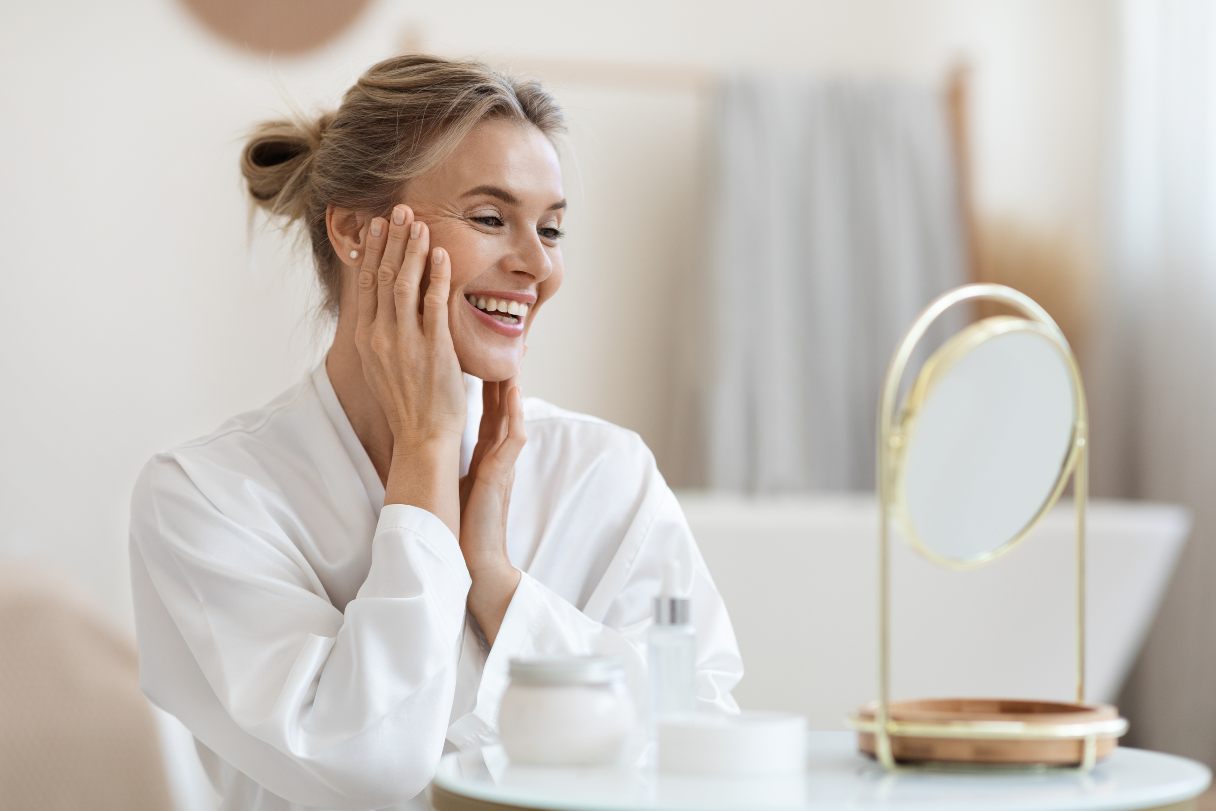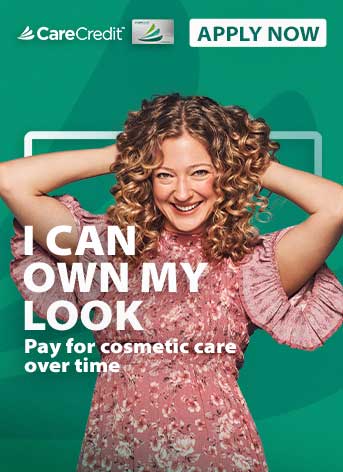
1. European Facial1

What is a European facial?
A European facial is good for dry skin. This multistep type of facial is great for beginners. It generally consists of a few key steps, including:
- Deep cleansing
- Exfoliating
- Steaming
- Black/whitehead extraction
- Massage with moisturizer
A European facial can help treat the following common skin conditions:
- Dull skin
- Clogged pores
- Breakouts
European facial side effects and recovery
You may have some redness after a European facial depending on the intensity of the extraction phase. A good rule of thumb for any type of facial is to schedule it at least one week ahead of a big event.
How long does a European facial take?
On average, a European facial takes between 60-90 minutes.
2. Hydrafacial2

What is a Hydrafacial?
Hydrafacials are a spa facial with a three-step process to clean, exfoliate and moisturize or hydrate your skin. It’s another great option if you’re looking for a facial for dry skin. A wand with specialized attachments is used to deeply clean pores and remove dead cells from the outer layer of skin. The wand also helps deliver problem-targeting serum deep into the skin.
A hydrafacial can help treat the following common skin conditions:
- Acne
- Dry skin
- Wrinkles
Hydrafacials facial side effects and recovery
Hydrafacials are typically gentle and effective with little to no side effects or recovery time. Some people may experience the following side effects:
- Redness
- Blotchiness
- Post facial breakouts
How long does a hydrafacial take?
On average, a hydrafacial takes about 30 minutes.
3. Oxygen Facial3

What is an oxygen facial?
During an oxygen facial, spa facial specialist (aesthetician) will clean and exfoliate your skin during an oxygen facial, then use a special wand to apply oxygen. The wand delivers highly pressurized oxygen to your skin which may help brighten skin cells, followed by serum or moisturizer.
An oxygen facial can help treat the following common skin conditions:
- Skin elasticity
- Fine lines
Oxygen facial side effects and recovery
Oxygen facials are gentle and a good option if you need a facial in the middle of your busy life. If you have sensitive skin, you may experience some redness or puffiness, but many people have no side effects and no recovery time.
How long does an oxygen facial take?
On average, an oxygen facial takes 30-60 minutes.
4. LED Light Facial4
What is an LED light facial?
During an LED light facial, a spa facial specialist will shine heat-free, UV-free red or blue light on your skin. This light helps the cells create more collagen and elastin. Depending on your needs, you may have red and blue light applied.
An LED light facial can help treat the following common skin conditions:
- Acne
- Inflammation
- Fine lines
- Skin elasticity
LED facial side effects and recovery
LED facials are usually gentle, with rare side effects (redness or puffiness) and almost no recovery time. However, most people will need a few sessions to notice results.
How long does an LED light facial take?
On average, an LED light facial takes about 20 minutes.
5. Vampire Facial (Platelet-rich Therapy – PRT)5
What is a vampire facial?
A vampire facial involves (you guessed it) blood. More specifically, the plasma from your blood. For this type of facial, a dermatologist will draw your blood, extract the plasma, and then apply it to your skin through injection or microdermabrasion (for more on microdermabrasion, see #9 on this list).
A vampire facial can help treat the following common skin conditions:
- Fine lines
- Wrinkles
- Sun damage
- Scars
Vampire facial side effects and recovery
Recovery time varies for this type of anti-aging procedure depending on a variety of factors, including skin type. Still, you should expect to experience redness, and you may need a day or two before you’re ready to be seen in public.
How long does a vampire facial take?
On average, a vampire facial takes between 30-60 minutes.
6. Dermaplaning6

What is dermaplaning?
This type of facial involves gently scraping away the top layer of dead skin cells (and peach fuzz!) from your face with a sharp surgical blade. Removing peach fuzz (also called vellus hair) and dead skin can help prevent breakouts and improve your skin’s ability to absorb serums and moisturizers.
Dermaplaning can help treat the following common skin conditions:
- Uneven skin tone/texture
- Dull skin
- Fine lines
- Wrinkles
- Acnes scars
Dermaplaning side effects and recovery
Most people don’t experience any side effects or downtime from dermaplaning. Brightening results are immediate, but it can take up to six treatments to see noticeable changes in scars and fine lines.
How long does dermaplaning take?
On average, dermaplaning takes between 20-30 minutes.
7. Acupuncture Facial7
What is an acupuncture facial?
During facial acupuncture, fine needles are inserted into the skin on your face (between 40 and 70 of them). The needles create minor wounds under the skin that encourage the body to produce healing proteins (collagen and elastin) to improve the appearance of your skin.
An acupuncture facial can help treat the following common skin conditions:
- Fine lines
- Wrinkles
- Skin elasticity
Acupuncture facial side effects and recovery
You may feel tingling or numbness during the procedure and slight bruising for a few days afterward, especially in the eye area. Multiple treatments are usually necessary to see and feel the benefits. To recap, side effects may include:
- Tingling
- Numbness
- Slight bruising
How long does an acupuncture facial take?
On average, an acupuncture facial takes between 20-25 minutes.
8. Microneedling8

What is microneedling?
Microneedling is a procedure that involves piercing through the skin to just below the lowest layer. Microneedling is done with tiny, sterilized needles to boost collagen production. Creating tiny superficial wounds in the skin encourages your body to make more collagen and elastin to heal (proteins that help your skin look younger).
Microneedling can help treat the following skin conditions:
- Fine lines
- Wrinkles
- Dark spots
- Large pores
- Sun damage
- Skin elasticity
Microneedling side effects and recovery
Because the needles pierce the skin, microneedling has the potential for more side effects than some of the other types of facials on this list. Some side effects of microneedling may include:
- Redness
- Peeling
- Infection
Recovery time from a microneedling procedure typically takes a few days, and most people need to have three to six treatments to see a difference.
How long does microneedling take?
On average, microneedling procedure takes between 10-20 minutes.
9. Microdermabrasion9
What is microdermabrasion?
During microdermabrasion, an aesthetician gently exfoliates the skin and vacuums the dead cells away after cleansing and steaming your face. They may use either a spray and vacuum method or a wand and vacuum method. They will typically apply moisturizer afterward.
Microdermabrasion can help treat the following common skin conditions:
- Dullness
- Sun damage
- Unevenness/discoloration
- Fine lines
- Age spots
Microdermabrasion side effects and recovery
Your skin may look pink and feel dry or tight immediately after treatment. This shouldn’t last longer than about a day, and most people notice results as soon as side effects subside.
How long does microdermabrasion take?
On average, microdermabrasion takes about 60 minutes.
10. Chemical Peel10

What is a chemical peel?
During a chemical peel, an aesthetician applies an acid solution to the skin. Chemical peels can vary in strength and type, but generally, they work by removing damaged layers of skin to encourage new skin growth. They also promote the creation of a larger quantity of collagen and elastin in the skin, leaving you with smoother, fresher, and healthier skin.
A chemical peel can help treat the following common skin conditions:
- Fine lines
- Acne scars
- Unevenness
- Rosacea
- Dullness
- Sun damage
Chemical peel side effects and recovery
Recovering from a chemical peel will take at least a few days, but length can vary greatly depending on the strength of the peel (up to two weeks for an intense peel). Many people also experience the following side effects, depending on the specific type of chemical peel:
- Redness
- Dryness
- Sensitivity
- Pain
However, the results from more intense chemical peels are usually more noticeable and longer-lasting.
How long does a chemical peel take?
On average, a chemical peel takes between 30-90 minutes.
Average Cost of a Facial

Different types of facials and spa facial treatments come with a wide range of price tags. The price of a facial will depend heavily on where you live, the type of cosmetic expert you work with, and the type and number of procedures you need. That said, here’s the general ballpark of what you might expect to pay for a facial:
- European Facial: $851
- LED Light Facial: $554
- Dermaplaning: $10011
- Microdermabrasion: $17512
- Hydrafacial: $1752
- Chemical Peel: $37513
- Microneedling: $62514
- Acupuncture Facial: $7007
- Vampire Facial: $1,0005
Paying for Facial Treatments With CareCredit
Spa facial treatments are a great way to pamper yourself and help refresh your skin. While insurance doesn’t cover them, you can use your CareCredit at providers that accept CareCredit.* Use the Acceptance Locator or download the CareCredit Mobile App to find a provider or retailer near you that accepts CareCredit.
Writer Bio
Kristin Driver is a Digital Writer with Synchrony. She specializes in writing about health care, finances, and pet care. Her work has been published by Cedars-Sinai, UCLA Health, Stanford Health Care, Risk & Insurance, Modern Health Care, Risk Insider, CIO Review, and more.







